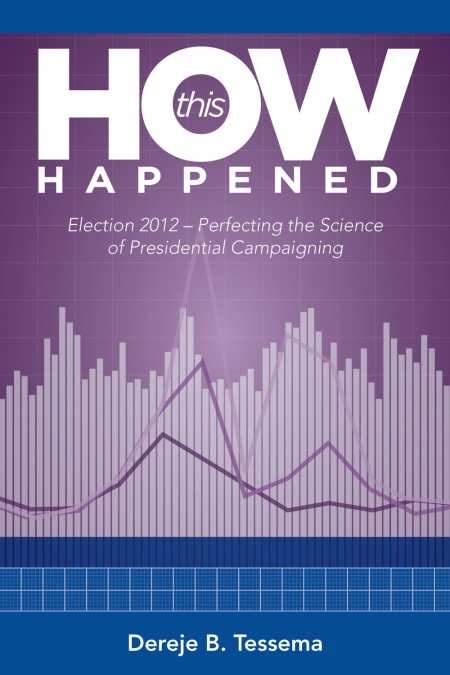How This Happened—Election 2012
Perfecting the Science of Presidential Campaigning
A thorough exploration of the Obama election illuminates the art and science of intelligent campaigning.
A meticulously constructed, frank examination of the 2012 US presidential election drawing from a plethora of sources, How This Happened follows up on Dereje B. Tessema’s earlier project of the same title, which covered the 2008 election. While early chapters centered on campaign methodology lack the cohesion and breadth of chapters on policy and projection, fascinating revelations run throughout.
This exploration of how Barack Obama secured his second term expounds upon other Monday-morning analyses. Though few pollsters and pundits predicted a strong win, the Obama administration ended up being re-elected by a strong margin, and the author makes a case that the victory was well-earned. “The signature of the Obama campaign,” Tessema asserts, “was its ability to maximize positive events and turn … challenges [in]to opportunities.”
Early chapters are devoted to the campaign itself, to the “how” of re-election, and may well be affixed to political adviser Jim Messina’s resume. They praise his efforts at bringing the campaign in line with both contemporary media trends and effective business models. By listing and explaining particular strategies, including careful polling, targeted ad buys, and thoughtful use of social media, as well as the development of new technologies like Project Dreamcatcher, a specially developed text analytic software designed to illuminate voter positions and desires, Tessema paints a picture of a campaign run with complex innovation. While lists (of high-level campaign strategists, for example) that end these early chapters sometimes seem superfluous, such ground is regained in later chapters.
Beyond intelligent campaigning, the book argues, Obama’s win was a validation of his first term. Though stalwart Republicans colluded against the administration from the beginning (Tessema lists names to bolster this accusation), the president managed to pass sweeping, necessary legislation. This, the book asserts, provides the “why” of his reelection: legislative wins both prevented sustained economic depression and provided a hopeful path forward on fronts such as health care and national security.
Chapters are devoted to the auto industry bailout, the economic recovery plan, national security measures, Supreme Court selections, and legal reforms to banking and fiscal policies. The 2008 election is put in historical perspective, and the troubles which plagued it are traced to their roots. Obama’s solutions, presented as creatively audacious and roundly successful, are examined. Tessema doesn’t shirk from showing where and how the president made enemies in the process, but his administration’s leadership choices are ultimately defended.
The Obama administration’s win was further secured, the book suggests, by its ability to present a sympathetic front before those whom the Romney campaign alienated—independents, women, and minorities. Romney may have been shell-shocked the morning after, but the author does not seem to share the Republican candidate’s surprise. A late chapter ends with commendations from voters themselves, most speaking of the president with terrific support and gratitude.
How This Happened is a cleverly constructed, well contextualized insider’s history of the 2012 presidential campaign, one which will imbue supporters with a sense of pride, and which may prompt fruitful conversations with detractors. It is a sure treat for those fascinated by the political process.
Reviewed by
Michelle Anne Schingler
Disclosure: This article is not an endorsement, but a review. The publisher of this book provided free copies of the book and paid a small fee to have their book reviewed by a professional reviewer. Foreword Reviews and Clarion Reviews make no guarantee that the publisher will receive a positive review. Foreword Magazine, Inc. is disclosing this in accordance with the Federal Trade Commission’s 16 CFR, Part 255.

